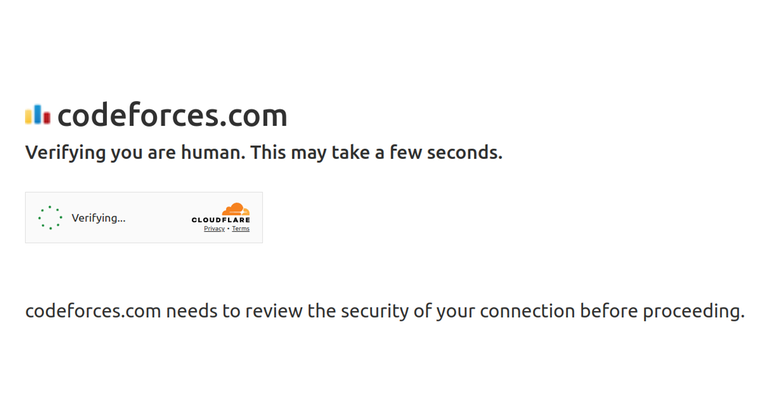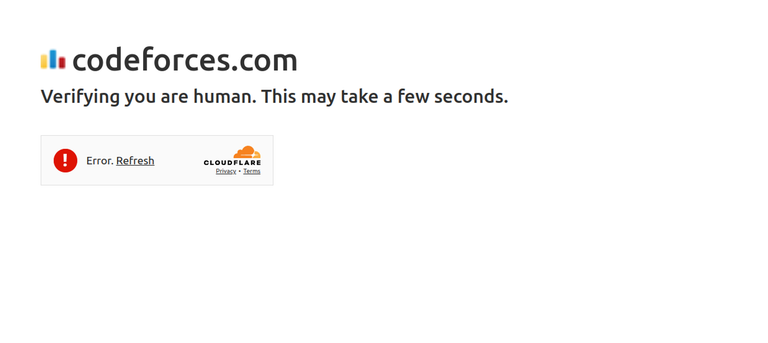Hello Codeforces!
I’ve been facing an ongoing issue with Cloudflare’s browser verification on Codeforces, especially during the last Div. 3 round. Below are the screenshots of what I encountered:


During the contest, I spent around 20 minutes trying to resolve this problem, but I couldn't fix it. I eventually switched to m3.codeforces.com to continue. This issue keeps happening frequently. A few days ago, I couldn't submit my code in the last minute of the contest because of this verification. I don't know if others face this issue, but I’m experiencing it regularly.
Has anyone else faced this problem? How can I avoid this issue? Any help would be greatly appreciated!









